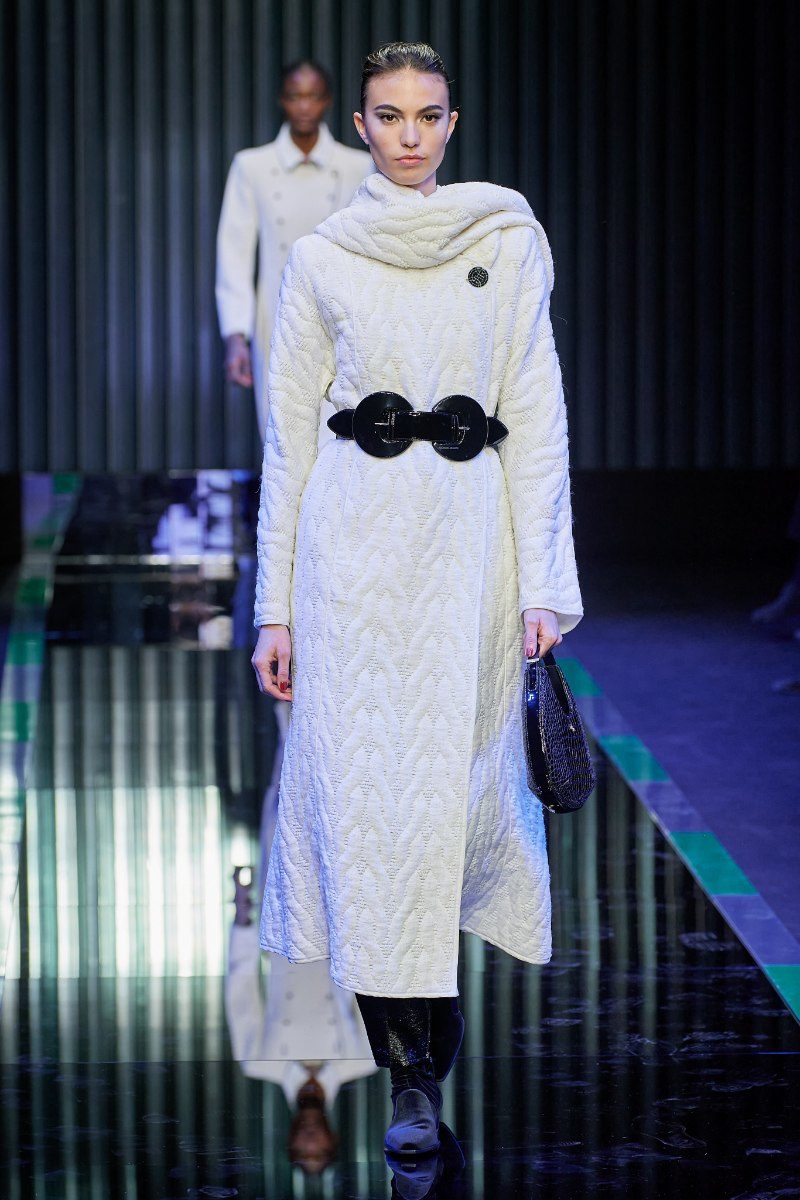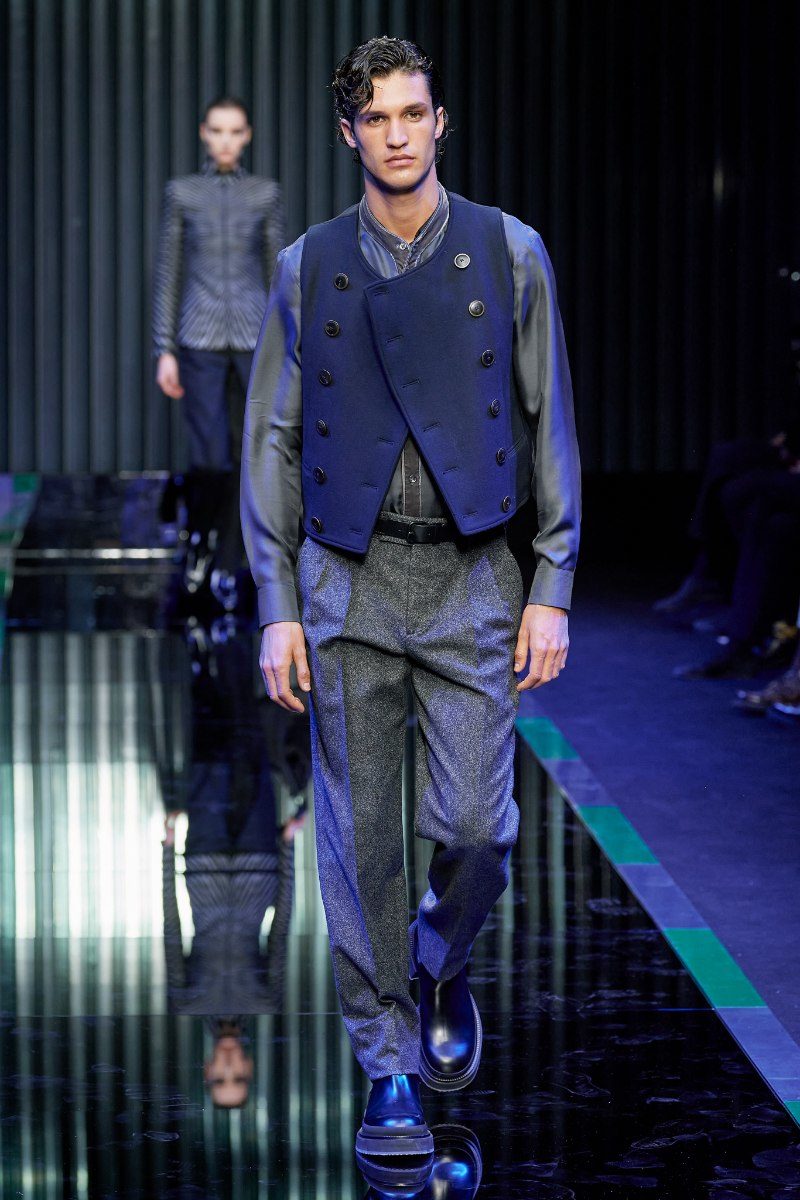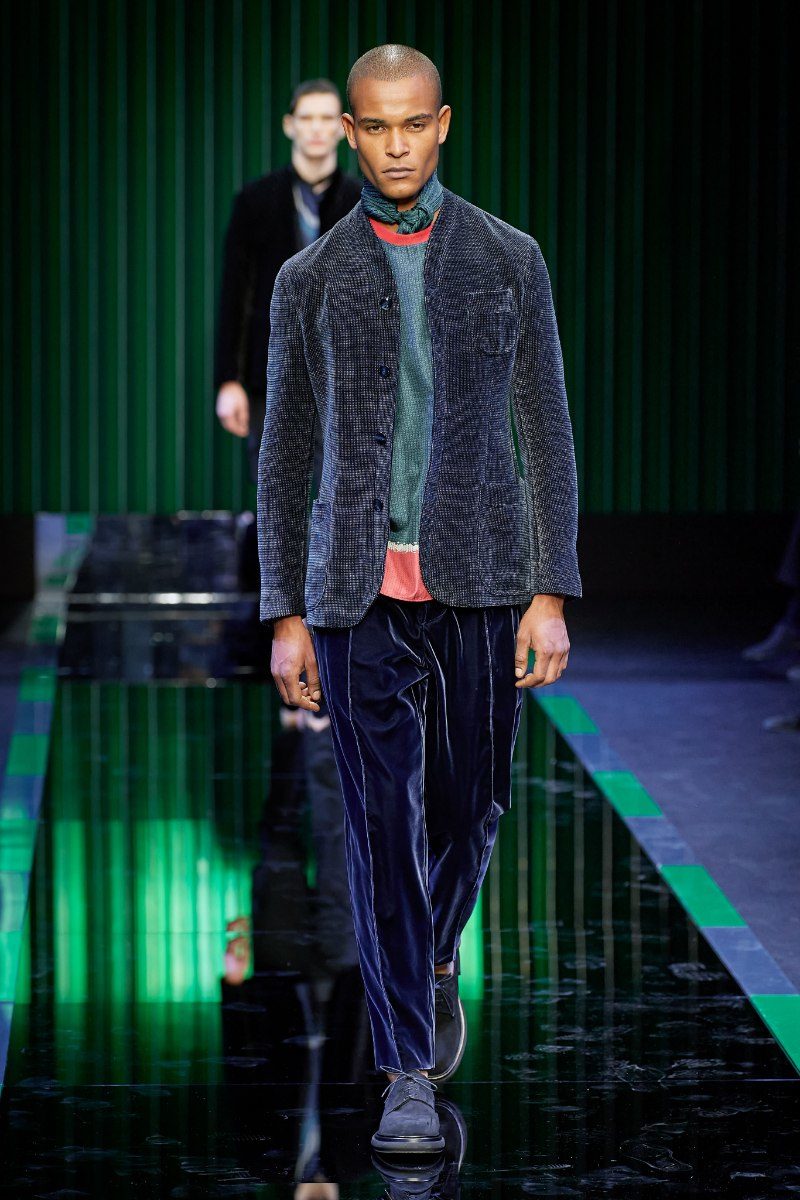The Giorgio Armani show opened with a voice reading a statement from the designer in English: “My decision not to use any music in the show was made as a sign of respect to the people affected by the evolving tragedy.” As silence fell on the intimate underground runway at Via Borgonuovo, a sense of solemnity and sadness filled the room. This week, demonstrators have been waving Ukrainian flags and anti-Putin signs outside show venues, utilising the global exposure of Fashion Week to protest the Russian invasion. Today, Armani joined them, becoming the first designer to directly use his show to lament the atrocities. “What could I do?” he wrote in an email after. “I could only signal my heartbeat for the tragedy through the silence. I didn’t want show music. The best thing is to give a signal that we’re not happy, to recognise [that] something disturbing is happening.”
In fashion, we’re accustomed to loudness on every level. When somebody switches off the noise—either literally or figuratively—silence speaks louder than words. Armani designed his collection weeks before Russia invaded Ukraine on February 24th, but there was a softness and stillness to his silhouettes that echoed the quietness of their surroundings. As he said, “I think the clothes became even more powerful through the silence.” The collection exemplified elegance through reduction. Languid silver tailoring oscillated with mercurial grey flou in garments accentuated only by the subtle twinkling of crystals. As models walked, silk skirts draped softly around their ankles and tiers of beaded fringe rustled in the peaceful space.
Tailoring and dresses constructed in cubic prints and intarsia couldn’t help but draw the mind to the 1930s, a recurring symbol this season. As on other runways, the motif was perhaps reflective of Armani’s mindset during the collection’s design process, no doubt affected by the escalating fears of conflict, which culminated in this week’s invasion. For this designer, however, wartime isn’t simply a reference. It’s a memory. Born in 1934, Armani was eleven years old when the Second World War came to an end. He has experienced war on European soil, and the tolerance, diplomacy and elegance that embody his life’s work are products of a mind borne out of a wartime aftermath that most of us could never imagine.
This season, those everlasting values manifested in a timely softness. It translated into technical ideas like the lapels of a super light women’s tuxedo constructed so it looked like they were sliding off her shoulders, or the faint laser-cut patterns of soft faux shearling coat. In fabrication, it took shape in icy velvet men’s tailoring and in enveloping cuddly outerwear, like an ivory robe quilted like rope and a plush velvet men’s robe with a pinstriped back panel. Beyond Armani’s verbal statement and gesture of silence today, there was a quiet, poetic dignity to this collection. In February 2020, his brand became the first to cancel a show out of caution over Covid-19. Two years on, as the most senior designer in the industry, he once again demonstrated the sensitivity and responsibility that will become part of his legacy as a man with his heart in the right place.

1 / 9

2 / 9

3 / 9

4 / 9

5 / 9

6 / 9

7 / 9

8 / 9






